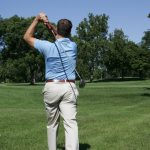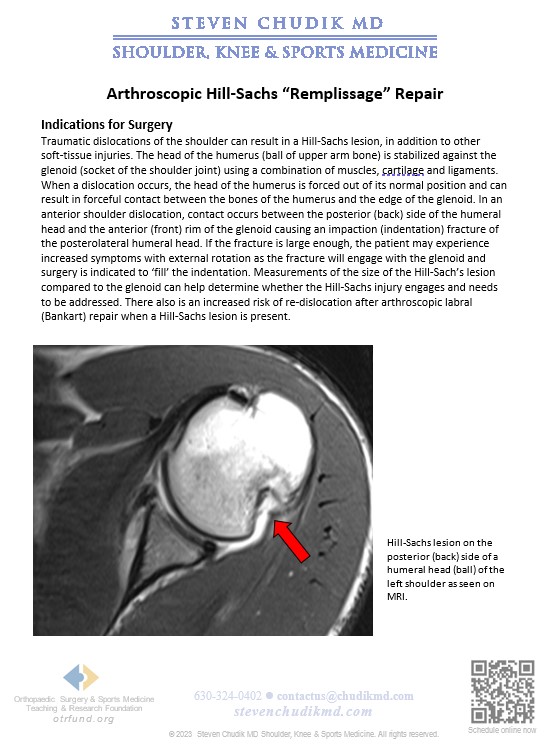 Are you ready "fore" golf?
Are you ready "fore" golf?
Traumatic dislocations of the shoulder can result in a Hill-Sachs lesion, in addition to other soft-tissue injuries. The head of the humerus (ball of upper arm bone) is stabilized against the glenoid (socket of the shoulder joint) using a combination of muscles, labrum and ligaments. When a dislocation occurs, the head of the humerus is forced out of its normal position and can result in forceful contact between the bones of the humerus and the edge of the glenoid. In an anterior shoulder dislocation, contact occurs between the posterior (back) side of the humeral head and the anterior (front) rim of the glenoid causing an impaction (indentation) fracture of the posterolateral humeral head. If the fracture is large enough, the patient may experience increased symptoms with external rotation as the fracture will engage with the glenoid and surgery is indicated to ‘fill’ the indentation. Measurements of the size of the Hill-Sach’s lesion compared to the glenoid can help determine whether the Hill-Sachs injury engages and needs to be addressed. There also is an increased risk of re-dislocation after arthroscopic labral(Bankart) repair when a Hill-Sachs lesion is present.
Dr. Chudik performs arthroscopic surgery using a tiny camera that allows him to view the inside of the shoulder through small incisions and repair the injured structures associated with the dislocation. Smaller non-engaging Hill-Sachs lesions do not necessarily require treatment. Large or engaging Hill-Sachs lesions are addressed by either reconstructing (rebuilding) any lost bone on the glenoid side or performing a “Remplissage” procedure which repairs the posterior capsule and rotator cuff tendon to the Hill-Sachs bone defect. Both procedures can help prevent the Hill-Sachs lesion from engaging with the glenoid edge. This procedure often is performed in conjunction with an arthroscopic labral (Bankart) repair to aid in preventing further shoulder dislocations. Following this procedure, the patient is immobilized in a sling for six weeks and is expected to attend four to six months of formal physical therapy to restore normal shoulder strength and function.
Learn More